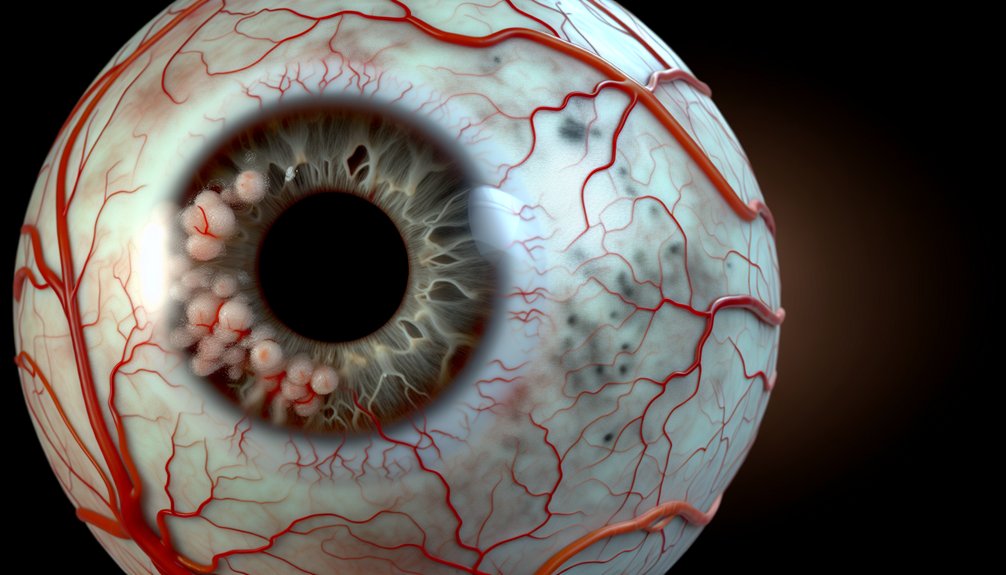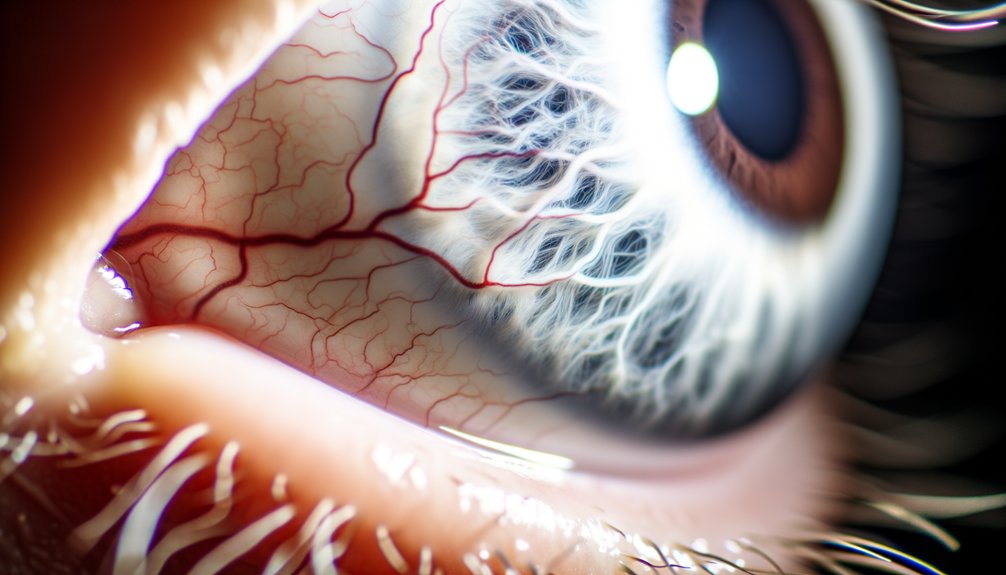Diabetes can quietly wreak havoc on eye health, often leading to vision loss through conditions like diabetic retinopathy. This sneaky disease may not show signs in the early stages, making it feel like a ticking time bomb. Many face this tough battle, especially in certain communities. But hope exists! Regular check-ups and keeping blood sugar levels in check can protect sight. A proactive approach can transform fear into confidence, and there’s so much more to discover about safeguarding vision.

When people think about diabetes, they often picture the struggles of managing blood sugar levels and dietary choices. However, many overlook a considerable aspect: how diabetes affects eye health. The journey of someone with diabetes can be challenging, especially when it comes to grappling with the risk of diabetic eye diseases. Recent statistics show that the prevalence of these diseases has nearly doubled, affecting about 20.8% of individuals with diabetes by 2021. This alarming increase means that more people are facing vision issues than ever before.
Diabetic retinopathy, the most common eye disease among diabetics, impacts approximately 26% of adults in the U.S. This condition progresses from an early stage, where blood vessels begin to leak, to a more severe stage where new, abnormal vessels grow. Imagine the fear of waking up one day and realizing that your vision is not as sharp as it used to be. For many, this is a harsh reality. High blood sugar damages retinal blood vessels, which can lead to significant vision loss if untreated.
The risk of vision loss escalates dramatically with the progression of the disease, especially among Black and Hispanic populations, who face higher incidences of vision-threatening conditions. What’s even more disheartening is that symptoms often don’t appear until late stages, leaving many unaware of the damage until it’s too late. In recent years, the incidence rate of new cases has surged significantly, indicating a pressing need for awareness and prevention.
Yet, there’s hope. Early detection can pave the way for effective prevention and treatment. With a 51% decline in severe cases from 2009 to 2022, advancements in medical care offer a glimmer of optimism.
It’s essential to prioritize regular eye check-ups and maintain healthy blood sugar levels. By doing so, individuals can protect their vision and continue enjoying life to the fullest. Though the threat of diabetic eye diseases looms large, understanding and proactive care can considerably reduce risks, allowing people to focus on the joys of life, rather than the fears surrounding their health.
